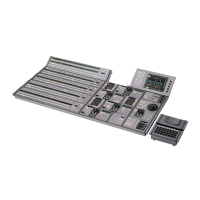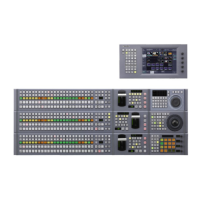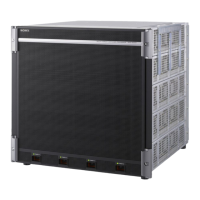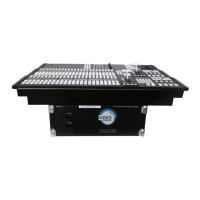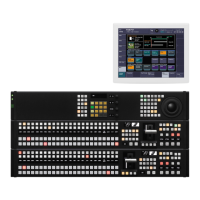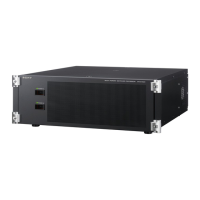Executing a Transition 111
Chapter
3
Signal
Selection
and
Transitions
Normally, when a background transition is carried out on
an M/E bank, the signals selected on the A and B rows of
cross-point buttons are interchanged at the end of the
transition. That is to say, except during a transition, the
background output is always from the background A bus.
This is called “flip-flop mode.”
The alternative is known as “bus fixed mode,” in which
there is no bus interchange. In this mode, when the fader
lever is at the top of its travel the output from the A bus is
always 100%, and when the fader lever is at the bottom of
its travel the output from the B bus is 100%.
Buttons lit
Fader
lever
•
When a transition applies to a combination of more than
one of the background and keys 1, 2, 3, 4, 5, 6, 7, and 8,
then the transition for all of these must be in the same
direction complying with the above table.
•
If as a result of an auto transition, for example, the fader
lever position does not agree with the signal output, this
is a non-sync state (see page 110) and LEDs light at both
end positions of the fader lever travel. Moving the fader
lever does not carry out a transition, but when the fader
lever reaches the end position the non-sync state is
released, and it is now possible to carry out the next
transition. If the fader lever is moved in the direction
away from the lit LEDs, this carries out the next
transition, over the remaining part of the fader lever
travel.
Flip-flop mode
Bus fixed mode
Flip-flop mode and bus fixed mode
In the bus fixed mode there is a fixed relationship between
the position of the fader lever and the signal output on each
bus. Depending on the direction of the transition, the fader
lever must therefore always be moved in a particular
direction, as shown in the following table. This does not
affect an auto transition, which is executed regardless of
the fader lever direction.
Keys 1, 2, 3, 4,
5, 6, 7, and 8
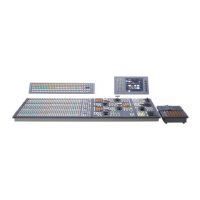
